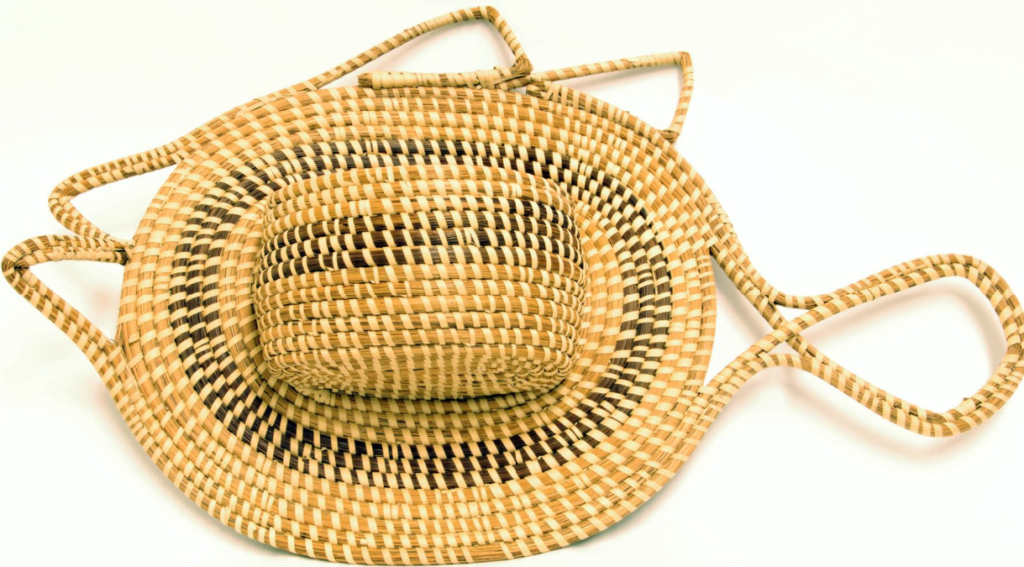» October is American Archives Month: Decorative Sweetgrass Wall Pocket By Kangkang Kovacs
This blog post is written by Kangkang Kovacs, who is a graduate assistant at the Avery Research Center for African American History and Culture during the 2021-2022 academic year. Kovacs is a student in the College of Charleston's Masters in Fine Arts program.
The Avery Research Center for African American History and Culture has a strong collection of sweetgrass artifacts, such as baskets, shoes, hats, and decorative items. One decorative item is an abstract fish made of sweetgrass, pine needle and palmetto leaves. The artifact was made by artist is Nakia Wigfall, who comes from a legacy of Gullah Geechee basket makers. Wigfall’s great grandmother, Maggie Mazyk, was a flower lady and a sweetgrass basket maker. She sold flowers and baskets in the city of Charleston. Wigfall currently lives in the Six Mile community in North Mount Pleasant, where she and her siblings grew up learning the craft from their mother, Ethel “Catherine” Graddick Wigfall. One of her sisters, Willie Mae Jackson, owns a sweetgrass basket stand along the Sweetgrass Basket Maker’s Highway, which is a seven-mile stretch of road along Highway North 17. If you traveled down this road today, you would see bread baskets, small plates, and vases dangling in the breeze in simply constructed wooden sheds. It is hard for drivers to stop on the 55-mph road; and it is even harder for basket makers as they are exposed to the heat, humidity, noise, and exhaust, not to mention the danger of ongoing traffic. Some basket makers have moved farther north to the town of McClellanville, where development has not yet changed the landscape and the cost of living remains lower. Barbara McCormick is one of them as she and her family moved to McClellanville after Hurricane Hugo (1989) destroyed their home in Mount Pleasant.

In 2016, Wigfall took her first trip to the country of Senegal. She was excited that the coiled basketry there came in a variety colors and materials. The trip felt like homecoming in a way. She had always seen her craft, the sweetgrass baskets, as a tie between her people here in the Lowcountry and their West African ancestors.

https://shop.ultimategullah.com/product.sc?productId=229&categoryId=31
While there, she noticed a striking similarity between the sewing style used by locals in Senegal and her own. “I have always felt there was a part of me missing. I learned a little bit about slavery in school, but not the full story. Then one day, it hit home for me – those people are my people.”
